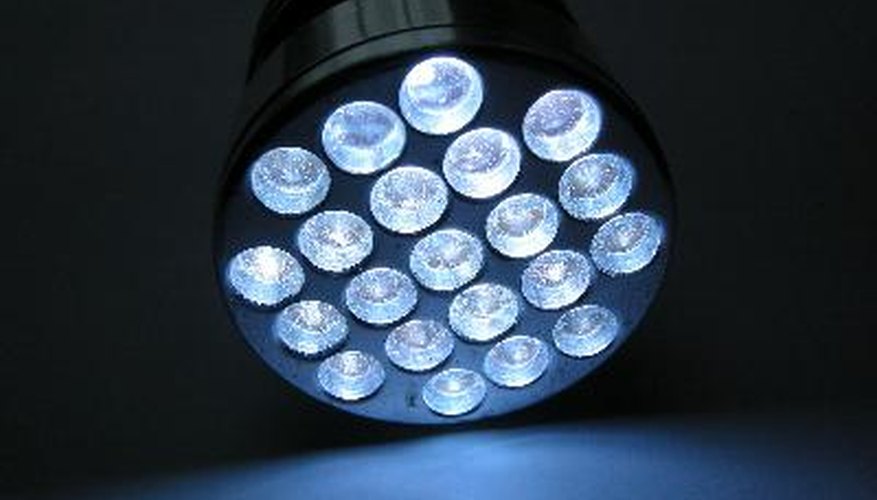Nightlights are commonly found in children's bedrooms to provide comfort if the child wakes up during the night, although many adults also suffer from a fear of the dark. Nightlights can also light up stairs and other potential hazards to prevent accidents in the dark. One concern when using nightlights is the cost, as they remain lit throughout the night.
Types of Nightlights
Nightlights are small self-contained units, incorporating a light source and a three-pin plug. They provide a low light level, illuminating the darkness without being intrusive and interfering with sleep. Nightlights are available in three types: incandescent, fluorescent or LED. Incandescent nightlights contain a small light bulb, and so tend to give off a “warm” glow. Most nightlights now use LED or fluorescent tubes, due to their much longer life span and lower power usage, and these usually give off a “cooler” looking light.
- Nightlights are small self-contained units, incorporating a light source and a three-pin plug.
- Incandescent nightlights contain a small light bulb, and so tend to give off a “warm” glow.
Electricity Use
Nightlights typically require very little power, since they are designed to operate throughout the night and generate low levels of light, Incandescent nightlights require the most power, usually from five to ten watts. Fluorescent nightlights require between two and five watts, while LEDs typically require one watt or less. This is much less than a standard incandescent light bulb, which can use sixty watts. Automatic nightlights with light sensors that turn the on only when needed can also be purchased.These can further lower power consumption, compared to manually operated nightlights.
- Nightlights typically require very little power, since they are designed to operate throughout the night and generate low levels of light, Incandescent nightlights require the most power, usually from five to ten watts.
- This is much less than a standard incandescent light bulb, which can use sixty watts.
Running Costs
In the UK, electricity is billed in units of one kWh, with the current price around 13p per kWh as of 2011. according to Ofgem. One kWh is equivalent to 1000 watts used for one hour. At 10 watts, an incandescent nightlight run for 12 hours will use 120 watts, costing 1.5p a night. A typical fluorescent light, which uses four watts, would cost 0.6p per 12 hours, and a one watt LED nightlight would cost 0.2p per 12 hours. For an LED nightlight, this works out to around 56p per year.
- In the UK, electricity is billed in units of one kWh, with the current price around 13p per kWh as of 2011.
- At 10 watts, an incandescent nightlight run for 12 hours will use 120 watts, costing 1.5p a night.
Wasteful?
Although some may regard the use of a nightlight as wasteful, its low power consumption and running costs mean that nightlights actually cost very little. Many electrical devices in a home draw between five and twenty watts just in standby mode, and these are left running constantly with little thought. Given the safety and comfort that nightlights provide, most people would consider nightlights worth every penny.
